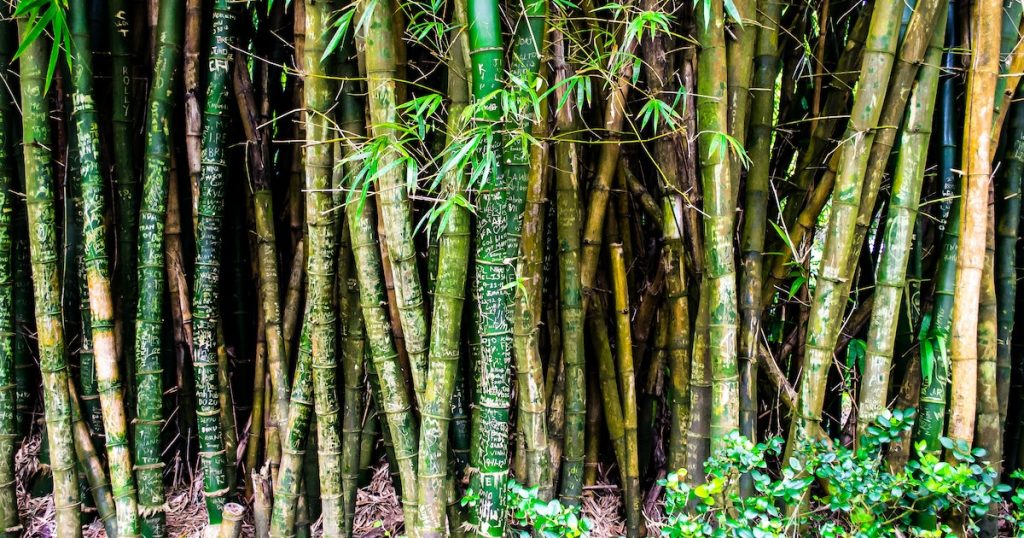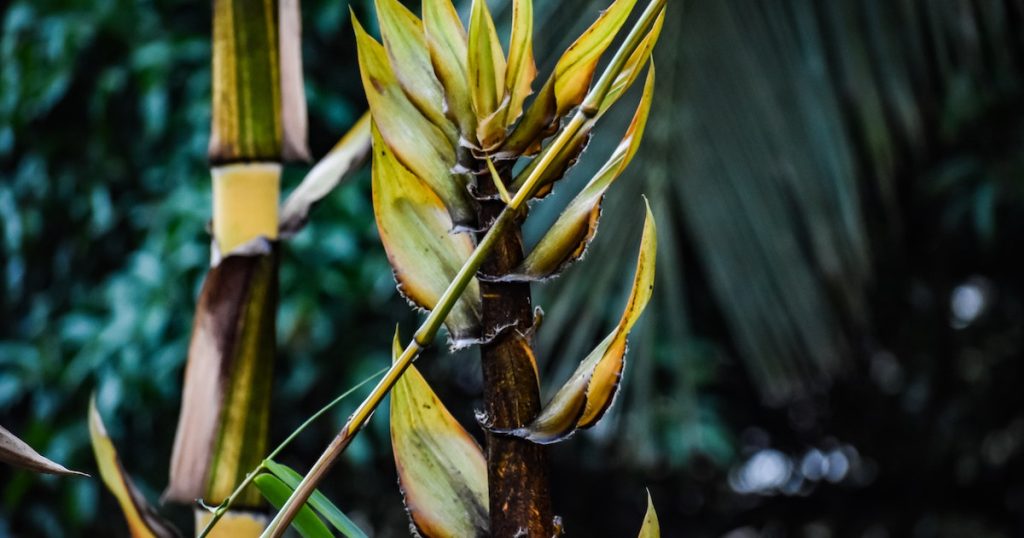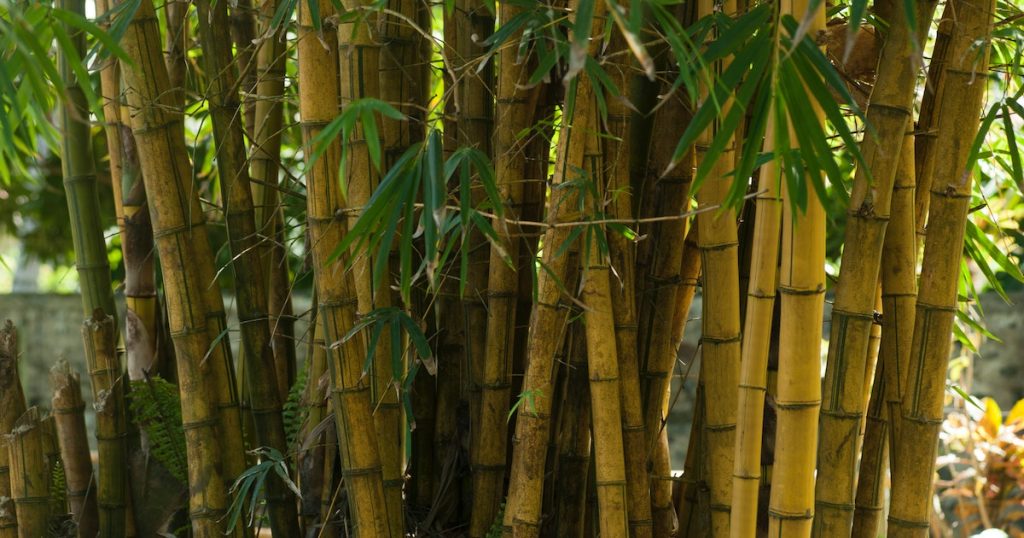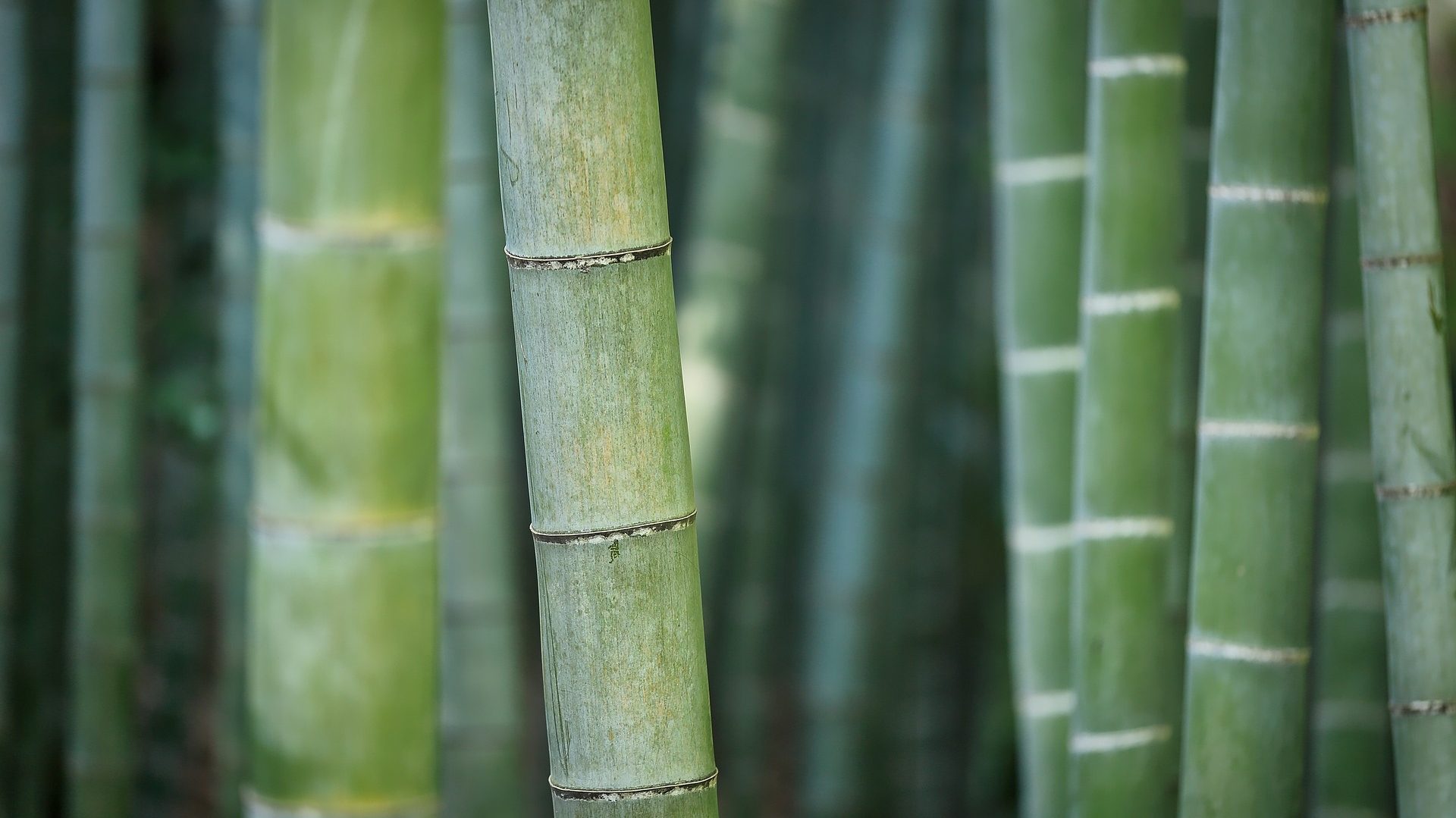Have you found yourself wondering, ‘why is my bamboo growing so slow?’ Despite the fact that bamboo plants are remarkably fast-growing, it can sometimes take months (or even years!) to see any signs of new growth. But what causes these kinds of delays?
Slow growth on your bamboo can happen because of a number of factors, and it manifests as faded leaves, brown tips, leaf curling, holes, and a lack of foliage. All of these point to an unhealthy plant. Luckily, most of these issues can be taken care of if you adjust your watering routine, use fertilizers, or move the plant to a brand-new pot.
If your bamboo planting experience has been far from speedy, then this post is for you! Read on to learn about common reasons behind slow-growing bamboo and how to identify if something’s wrong with your beloved plant. With some patience and proper care, you can help get those newly planted stalks started on the right track toward a healthy future!

Table of Contents
Why Is My Bamboo Growing So Slow?
When you are trying to grow bamboo, slow growth is often associated with unhealthy plants. However, it is not always easy to identify the issue at hand. If that is the case, you can use this section of the article as a troubleshooting guide to understanding why your bamboo is growing slowly. With each symptom, we will consider how they can be resolved and what the core issue is.
Yellow Or Faded Leaves
The telltale sign of a bamboo’s poor health is the yellowing and fading of its leaves. This could be due to various underlying issues, such as overwatering or underwatering nutrient deficiency, or even too much exposure to sunlight in some species.
Diagnosing these culprits can prove difficult but ultimately essential for restoring your bamboo’s vitality. The best way to address this is to look for other symptoms that can correspond with either of these issues and then resolve the problem accordingly.
Leaves With Brown Tips
Another common sign of bamboo health issues is the browning of leaves, with the tips taking on a darker shade than the rest of the plant. While this may be caused by nutrient deficiencies in some cases, it is more likely that your bamboo is suffering from insufficient access to water.
The best case here is to increase the amount of water you provide during routine waterings, and consider investing in a decent fertilizer that can provide your plants with the nutrients they need to survive.

Dropping Leaves
Leaves falling off the bamboo are a common sight and can be attributed to many factors, including insufficient watering or lack of nutrient resources. However, do consider that bamboo plants will shed their leaves according to the season.
Typically, bamboo plants lose their leaves in springtime, just before a new growth cycle begins on the crop. If this is not the time of the year, it is time to update your watering schedule or consider investing in fertilizer. This will help your growth speed up as well.
Curling Of Leaves
A sign of a serious nutrient deficiency, the curling leaves of your bamboo indicate an extreme lack of essential minerals in its soil. Bringing more nutrients into the soil is one way to resolve the issue, and these can be found through bought fertilizers or by using compost to enrich the ground.
Another common cause for curling is a lack of water. To determine the best approach, you may need to go through a series of tests to find out what is causing the issue. In more severe cases, it may be necessary to replace some soil with fresh dirt and water regularly for your bamboo to grow healthily.
Lack Of Foliage
The most common reason a problem like this happens and affects the growth of the plant is either due to lack of fertilization or using a pot that is too small for the bamboo plant.
If this is the case, you should consider repotting the plant into a larger pot and adding more fertile soil to it as well. Once you’ve addressed this problem, your bamboo will start growing at a much faster rate again.
Holes In Leaves
This issue can be caused by many different things, such as pests like moths and beetles trampling over the leaves of your bamboo. To resolve this, use insecticides and other pest control methods on a regular schedule to ward away harmful pests from your crop.
You can try bringing in a pest control specialist to determine the root cause of this problem or use fertilizer on your bamboo to resolve the issue. Taking these steps should help you get your bamboo growing at a normal rate again.
Tips To Quickly Grow Bamboo
If you want to grow your bamboo plants quickly, there is an easy way to do this if you can follow the steps listed in this section – they are sure to help your bamboo grow super fast!
Give The Bamboo Plants Less Water
The key to bamboo health is proper hydration – not too much, and not too little. The most important thing is ensuring the soil has excellent drainage. Puddles of water or overly saturated earth can make your prized plant susceptible to root rot and other unhealthy signs in its leaves.
To get the water levels just right, you can try sticking a finger into the soil about every week. If there is still moisture on your fingers after you pull them out, then stay reassured that that’s all these plants need! But keep an eye on those leaves for any curling – if spotted, hold off watering until they perk up again.

Make Sure To Fertilize Efficiently
Bamboo is a nitrogen-loving plant, so to keep it thriving, it is recommended to supplement its diet with organic compost or manure as fertilizer.
Be sure that the manure is not too fresh though; this could be harsh for your bamboo and may cause the browning of leaves at the tips! For best results, twice-yearly fertilization in early spring and mid-to-late summer should do the trick.
To keep plants healthy and strong, organic fertilizer is essential. It works to fortify the soil against pests that might otherwise target vulnerable specimens. In no time, you will have beautiful and tall bamboo plants that grow faster than ever!
Re-Pot The Bamboo In Bigger Spaces
Maintaining healthy bamboo plants in a pot or container can be quite challenging. The roots of the plant tend to become compact and dense, preventing adequate absorption of water and causing the overall health of your bamboo to suffer.
In addition, root-bound potted plants are more susceptible to pests such as aphids; these bugs will quickly target an unhealthy plant for consumption. To keep your bamboo thriving, inspect its roots two times annually and look into repotting it before root-bonding occurs – this is also a great way to help propagate new growth!
Make Sure To Prune Your Bamboo
For severely overgrown bamboo, give your plant a new lease on life with some pruning. With a handsaw in hand, identify and remove any canes that are cracked or lack their original color – getting as close to the ground as possible.
Not only will this help improve its overall appearance but it also helps direct energy towards healthier parts of the stand for more vigorous growth.
How To Make Bamboo Grow Faster In Water
One variety of bamboo plants, Lucky bamboo, can actually be grown in water at home! The process of making this happen is extremely easy, and with a few helpful tips, you can make sure these plants thrive in the water environment! In fact, if you are new to the world of Lucky Bamboo, here is a video to explain the plant and its basic care requirements:
Ensure There Is Adequate Light
First and foremost, you should know that this kind of bamboo needs access to brighter lights in order to grow quickly. While the plant can still grow in lower and moderate light, you will notice the growth rate will be increasingly slow.
One great way to make this happen is to place it in the direct line of sight of the sunlight, as it enjoys the warmth and direct light of the sun. You should also make sure to turn the bamboo after a few days to make sure both sides get the right amount of light.
Know When To Change Water
When it comes to caring for Lucky Bamboo plants, opinions vary on when you should change the water used to grow them. Some people make frequent changes while others only do so infrequently. The best way to maintain a middle round is to refresh your containers every 6-8 weeks.
To ensure root coverage and prevent tipping, which is a common issue with this type of plant, you can add water as needed as long as it is around a week. The number of days between changing water can change depending on temperature fluctuations.
If you spot foul smells or have hard tap water containing high mineral levels, switch out your supply for distilled or purified water instead!
Choose The Right Vessel For The Plants
There is no doubt that the Lucky Bamboo is a beautiful and low-maintenance houseplant, but it is important to remember that it requires ample room for its roots to grow.
For shorter arrangements housed in an enclosed dish or bowl, make sure there’s at least 1″ of available space around the entire circumference of the Lucky Bamboo so root development isn’t inhibited.
If your Spiraled Lucky Bamboo displays are taller than usual and growing out of vases, be mindful not to submerge them too deeply! For taller arrangements, having a height of around 3′ can be just the right amount to maintain your plants. Keeping more water than this risks rotting their stems.

Choose An Organic And Safe Fertilizer
While Lucky Bamboo may not actually be bamboo, it still requires fertilizer to ensure healthy and fast growth. If you wish to fertilize this plant in water, try using a safe brand that is considered one of the best for house plants. You should also note that fertilizing this plant in water is slightly different than fertilizing it in soil.
To keep your Lucky Bamboo thriving, start by adding a small amount of fertilizer at the beginning of each month and watch for any changes over the course of a few weeks to determine whether more or less needs to be added. With this approach, you can ensure that your Lucky Bamboo has the nutrients it needs to grow quickly and stay beautiful!
Protect The Bamboo From Pests
Common pests to watch out for when caring for Lucky Bamboo include spider mites, mealybugs, and scale. To protect your plants from these nasties, make sure to keep the water clean and free of debris that can attract them.
You can also use a diluted mixture of pure orange oil or neem oil after each watering to give the Lucky Bamboo another layer of protection. These plant-based oils are a great way to eliminate pests; they can be applied directly and break down naturally, making them non-toxic for pets and family members.
To further prevent pest infestations, you should also make sure to use sterile containers or pots when growing Lucky Bamboo and only use fresh water for each new batch of plants. This will help to keep the water clean and prevent the growth of mold or bacteria which can attract insects and other pests.
Final Thoughts
At the end of the day, Bamboo growing slowly is a surefire sign that there is something going on that is making the plant suffer. Whether it is an issue with the lighting, water quality, or a number of other common issues that can plague Bamboo plants, the best way to help your plant grow is to get to the bottom of what is going on.
Recent Posts
Miracle-Gro is a huge help when you are trying to get decent yields out of your plants or if you want them to thrive. However, you may have noticed that a single dose of fertilizer does little to...
There are many varieties of geraniums, and all of them are desirably planted by many gardeners and plant lovers around the globe. Geraniums require care like any other plant and regular watering, but...
